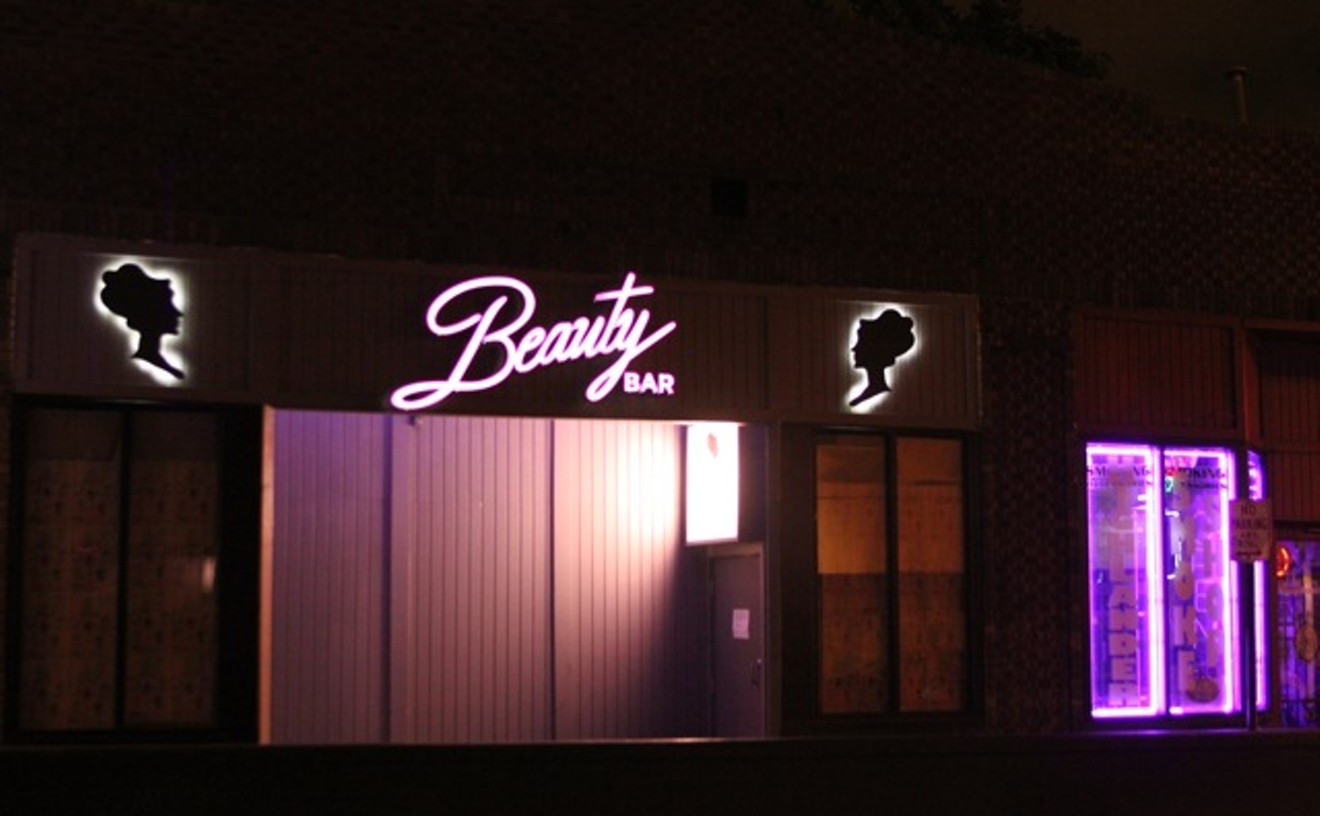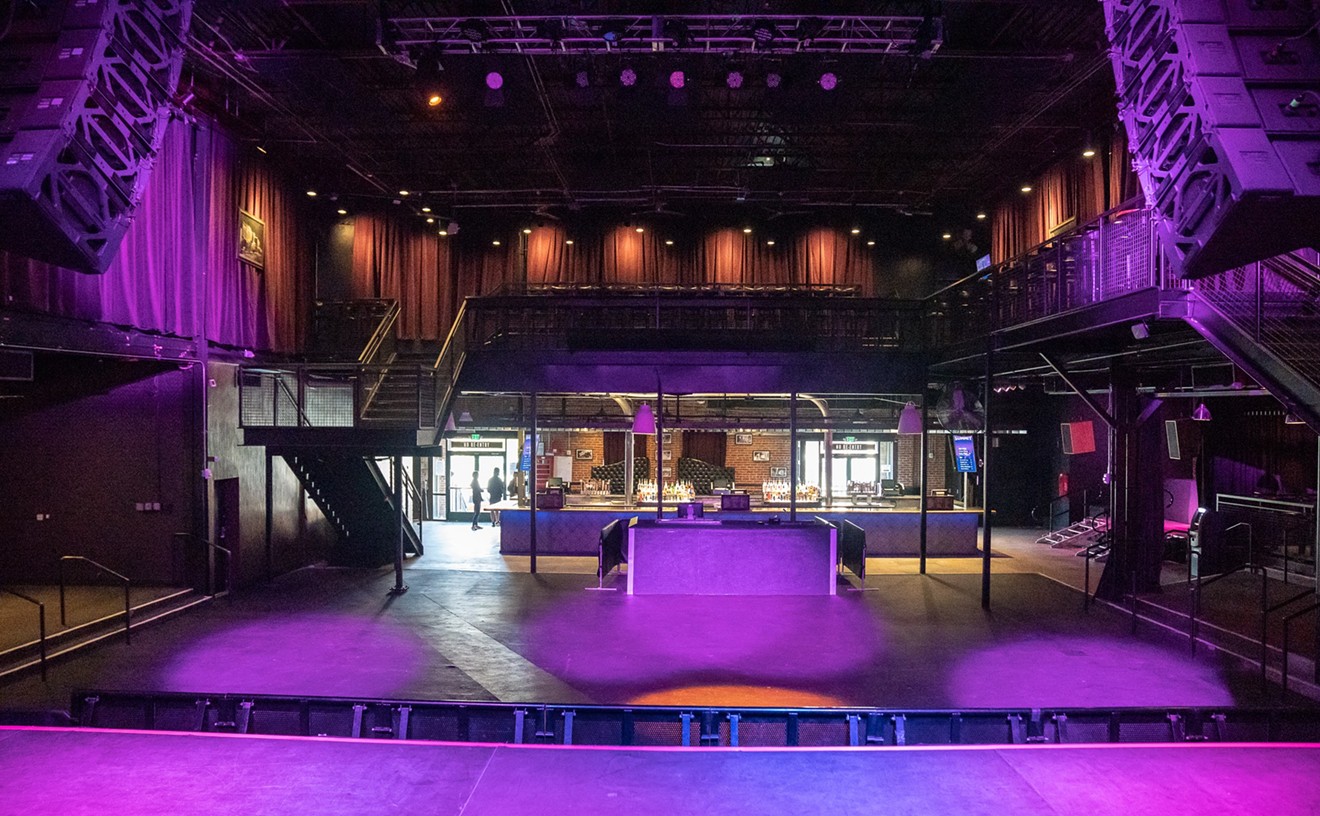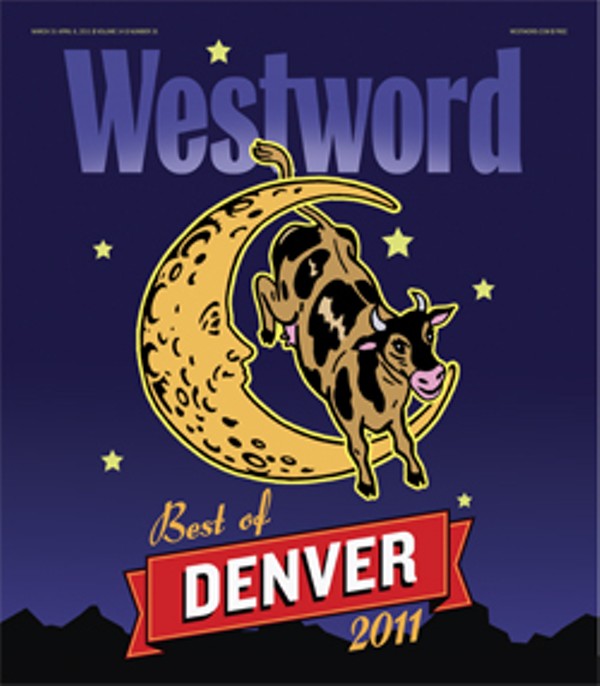Thurston Moore and Byron Coley surprised just about everyone when they picked local band Caldera Lakes (aka Eva Aguila and Brittany Gould) as one of their favorite things in their monthly Tongue Top Ten column in Arthur magazine last year. And later, when Sonic Youth played the Ogden Theatre, rather than have a more conventional touring band open the show, the alt-rock greats invited Caldera Lakes to open. The gesture not only highlighted the quality of that duo, but also showed that Thurston Moore is still connected to real underground music.
Best New Ambient Project
Kevin Costner Suicide Pact
If you ever had the pleasure of seeing Fellow Citizens perform their ambitious and atmospherically charged pop songs, you can be excused for not expecting what any members of that band might bring to Kevin Costner Suicide Pact. The name of the act is humorous, but it also suggests that the music has a serious side. And while it's doubtful that the three members of this band grew up listening to Hearts of Space late at night on NPR, you can hear strains of the types of soundscaping that Steve Roach would have explored. Essentially combining ambient space rock with noise, Kevin Costner Suicide Pact is one to keep.
Best New Band
BLKHRTS
BLKHRTS has been around, at least in theory, for the better part of a year — but it wasn't until this past January that it really found its legs. Until then, BLKHRTS (formerly Black Hearts) was rightly considered by most to be just a side project of Yonnas Abraham, and the group — Abraham, FOE, Karma and Catch Lungs — only made occasional cameos at Abraham's performances with The Pirate Signal. This year, however, brought BLKHRTS' debut recording, BLK S BTFL, an utterly riveting rap-rock hybrid that centers on Abraham's retro-futuristic production, which is both unique and progressive. And live, the crew brings an unbridled energy that's as ferocious as Onyx, as primal as Body Count and as frenzied and unhinged as Bad Brains. BLKHRTS is clearly no longer anybody's side anything. Here's what it is: the most exciting band to emerge in the past year.
Best New Club
Beauty Bar

After close to a twenty-year run as the Snake Pit, this Capitol Hill hangout got a much-needed makeover before it opened as Beauty Bar last June. Based on the original Beauty Bar concept that got its start in New York in 1995, Denver's Beauty Bar (there are similar clubs in Los Angeles, San Diego, San Francisco and Las Vegas) was brought to life by partners Noah Ray McMahan, Justin Martinez and Mike Barnhart, who turned the 3,200-square-foot space into a sparkly new club that captures the '50s beauty-parlor aesthetic of the original bar. Some of the furniture was salvaged from old salons, while booths and chairs left over from the Snake Pit era were reupholstered in black and silver glitter vinyl by a lowrider shop. Armed with a killer KS Audio sound system, the main room is a great spot for dancing to resident DJs or the nationally known spinners who occasionally pop in.
- 608 E. 13th Ave., Denver, 80203 Map
- 720-542-8024
- www.thebeautybar.com
Best New Experimental Rock Band
Holophrase
Had Katrina Ford stayed dark and spooky after she parted ways with Lovelife and formed Celebration, that act might have developed a sound similar to that of Holophrase. The angular chilliness of early Magazine and the caustic psychedelic sound of Damon Edge-era Chrome can also be heard as ghostly influences on this band's overall sound. Stirringly haunting, Holophrase brings together exotic vocals and beautifully menacing instrumentation. Blessed with the enigmatic poise and intensity of a post-punk band of old, the quartet is sure to confirm every suspicion of its gift for darkly beautiful compositions on its upcoming EP.
Best New Public Art
"The Red Forest"

"The Red Forest" sprouted up last year near the west steps of the Millennium Bridge in the Platte Valley, adding another exemplary piece of public art to Denver's collection. Using synthetic rods colored red, Egypt-born Australian artist Konstantin Dimopoulos mounted clusters that look like clumps of reeds to create "The Red Forest." When the air is still, the clustered rods soar above our heads, but when the wind kicks up, they sway and move. Since spotlights are an integral feature, the view also changes drastically at night, when the red rods catch the rays in such a way that they seem internally lit. The work, funded by the Riverfront Park Community Foundation, was selected by the Denver Office of Cultural Affairs, and in this case, DOCA made an illuminating choice.
- 16th St., Denver, 80202 Map
Best New Public Art That's Actually Old
Anthony Magar Sculpture
Back in 1968, a group of local sculptors and their friends from around the country descended on Burns Park, a triangular patch of turf bounded by Colorado Boulevard, Alameda Avenue and Leetsdale Drive, and erected a series of minimalist sculptures for the first — and only — Denver Sculpture Symposium. One of those sculptors was Anthony Magar of New Mexico, whose work caught the eye of art collectors Susanne and Lloyd Joshel; they commissioned Magar to do a piece for the lawn of their modernist home nearby. When Susanne died a couple of years ago (Lloyd had already passed away), she left her Magar to the city so that it could be installed in Burns Park. Last summer, the untitled sculpture was put in a spot just east of Colorado Boulevard, where it stands out as one of the best pieces in that very public, outdoor gallery.
Best New Recording
Survival Story
Whether intentional or incidental, it seems pretty telling — and ironic — that Universal Records and Flobots parted ways after Survival Story, a thematic, far more carefully crafted and considered (not to mention better-sounding) album than its predecessor, Fight With Tools, which introduced the band to the masses and propelled its creators to fame based largely on the strength of the "Handlebars" single. But Flobots were always about more than just one catchy song, and this album bears that out, from the lyrics to the hidden cross-references to the stunning cover art created by Jonathan Till. What it didn't have, unfortunately, was another breakout single — and that, it seems, was a deal-breaker for the label. Style clearly trumps substance these days at the majors. The odds of surviving with that sort of superficial approach? Bleak, at best.
Best New Venue
Summit Music Hall

While the folks at Soda Jerk Presents already owned the Marquis Theater at the edge of LoDo and the Black Sheep in Colorado Springs, they still wanted a bigger venue of their own where they could put larger-drawing acts, which were previously booked at various bigger venues around town. So last year, Mike Barsch and company took over the former Bash nightclub space at 1902 Blake Street and transformed the 12,500-square-foot venue into a first-class music venue with top-notch lighting and sound rigs. Since reopening as Summit Music Hall last April, the venue has brought in a steady stream of acts that run the gamut from punk and metal to hip-hop and industrial. And when the main room isn't being used for bigger shows, the front room, which has a small stage, occasionally brings in local acts, adding a welcome option for this scene's up-and-coming bands.
- 1902 Blake St., Denver, 80202 Map
- 303-487-0111
- www.summitdenver.com
Best Night for Word Nerds
Rock 'N' Roll Spelling Bee

At 10 p.m. on any given Monday night, the corner of Tenth and Santa Fe is a pretty quiet place. But don't let that fool you: Inside Interstate Kitchen & Bar, the weekly Rock 'N' Roll Spelling Bee is buzzing. The brainchild of bartender Kevin Galaba, the bee, accompanied by a soundtrack favoring the likes of Chuck Berry and Jerry Lee Lewis (hence the name), is the place to bring your spelling smarts. But leave your stage fright at home: The RNR is one laid-back bee, done at your seat with pencil and paper. That means you don't have to leave your drink — like the buck-fifty Lone Stars on special — unattended to recite (or screw up) your word in front of an audience. Prizes are awarded for good spelling and even good penmanship. Can you spell F-U-N?
- 1001 Santa Fe Dr., Denver, 80204 Map
- 720-479-8829
- www.interstaterestaurant.com





